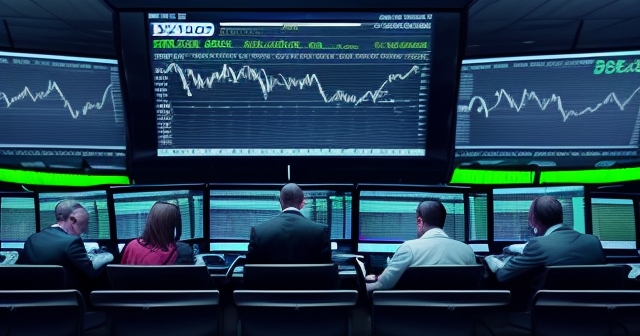
T1 Halt Meaning: Understanding the NASDAQ Trading Signals for Investors
Table of Contents
ToggleUnderstanding the NASDAQ T1 Halt: What “News Pending” Means for Traders
Trading halts are a standard and crucial mechanism within the complex landscape of financial markets. They represent a temporary pause, a deliberate suspension in the buying and selling of a specific security on an exchange. While various types of halts exist, each triggered by distinct events or conditions, the NASDAQ T1 halt holds particular significance. If you’ve ever watched a stock chart suddenly flatline during market hours, displaying an ‘H’ or ‘Halt’ symbol, you might have encountered one of these pauses.
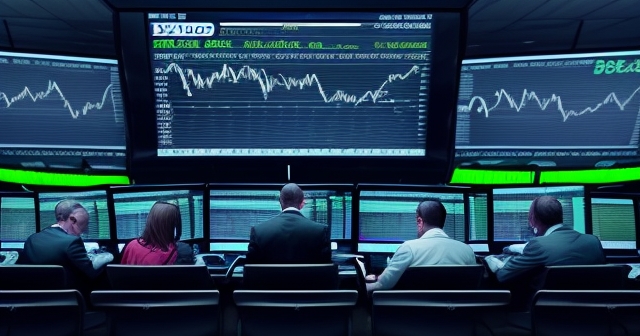
For both seasoned investors and those just beginning their trading journey, encountering a T1 halt can initially be perplexing, perhaps even a source of anxiety if you hold a position in the affected stock. What exactly does this specific halt code mean? Why does it happen, and critically, what should you, as a market participant, do when it occurs? Understanding the meaning and implications of a T1 trading halt is absolutely essential for navigating potential market volatility, making informed decisions, and protecting your capital when trading eventually resumes.
In this comprehensive guide, we will unpack the intricacies of the NASDAQ T1 halt. We will explore its definition, delve deep into the reasons behind its implementation, trace its typical lifecycle from pause to resumption, analyze its potential impact on traders like you, and discuss effective strategies for managing such events. Consider this your essential lesson in decoding one of the most important signals you’ll encounter when trading on NASDAQ.
Defining Stock Trading Halts: A Necessary Market Pause
Before we focus specifically on the T1 halt, let’s establish a foundational understanding of what a stock trading halt is in general. At its core, a trading halt is an abrupt, temporary suspension of trading activity for a particular stock or security on a stock exchange, such as NASDAQ, the NYSE, or others globally. Imagine the bustling, continuous flow of buying and selling orders suddenly being put on hold.
Halts are distinct from market closures (like the end of the trading day) or exchange-wide shutdowns (which are rare and typically only happen in extreme crises). They are specific to one or a limited number of securities. Why do exchanges have the authority to impose such pauses? The primary reasons revolve around maintaining market integrity, ensuring fair and orderly markets, and protecting investors from potentially disruptive or unfair trading conditions.
| Reason for Trading Halts | Description |
|---|---|
| Market Integrity | Maintaining a stable trading environment to protect investors. |
| Orderliness | Ensuring that trading activities are conducted in a fair manner. |
| Investor Protection | Preventing potentially disruptive trading conditions. |
Various events can trigger a trading halt. Some are related to significant news, others to sudden, dramatic price movements that indicate potential panic or manipulation. Regulatory bodies, most notably the SEC in the United States, provide the overarching framework and rules under which exchanges operate, including their authority to implement and lift halts. Exchanges like NASDAQ then have their own specific rules, procedures, and importantly, code systems to categorize the reason for a halt. This is where the T1 halt code comes into play.
The Specifics of the NASDAQ T1 Code: “Halt – News Pending”
Now, let’s zoom in on the star of our discussion: the NASDAQ T1 halt. When you see the code ‘T1’ associated with a stock on the NASDAQ exchange, it carries a very specific and critical meaning: “Halt – News Pending.” This is not a halt triggered by volatility, nor is it due to technical glitches on the exchange (though other codes cover those possibilities). The T1 code is exclusively linked to the expectation of significant corporate news.
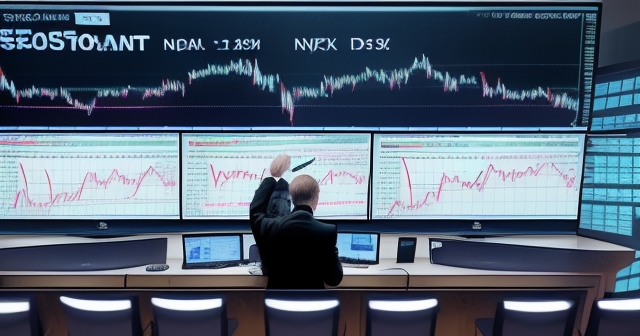
The moment a company announces that it is about to release material news – information that is likely to influence the company’s stock price and investor decisions – NASDAQ may impose a T1 halt. The “pending” aspect is key here. The news hasn’t been fully released and disseminated to the public yet. It’s imminent, or at least expected very soon. The exchange, in conjunction with the company, initiates the halt specifically to precede the official release of this news.
Think of it like a brief timeout called just before a major announcement is made to a large crowd. The timeout isn’t because something went wrong; it’s to ensure everyone is paying attention and gets the information at the same time. The T1 halt serves this crucial function in the market, preventing trading based on incomplete information, rumors, or information leaks that could give some participants an unfair advantage over others. It’s a proactive measure to level the playing field and uphold the principle of fair information dissemination.
Understanding “Material News”: The Trigger for T1 Halts
What exactly constitutes “material news” that is significant enough to trigger a NASDAQ T1 halt? The term “material” in a financial context refers to information that a reasonable investor would consider important when making an investment decision. This means it’s news that is likely to have a noticeable effect on the company’s stock price or its future prospects.
The types of events or information classified as material news are broad and varied, reflecting the many facets of a company’s operations and its environment. It’s not just about quarterly earnings reports, although those are certainly material. Here are some common examples:
- Major Corporate Transactions: This includes announcements of mergers, acquisitions, divestitures (selling off parts of the business), tender offers, or significant joint ventures. These fundamentally change the structure or size of the company.
- Significant Financial Health Information: Beyond regular earnings, this could be unexpected revisions to earnings forecasts (either significantly up or down), large write-offs, major changes in debt levels, or potential bankruptcy filings.
- Key Regulatory Developments: News about government investigations, major fines, adverse regulatory rulings (e.g., a drug not getting FDA approval), or significant policy changes affecting the company’s industry can all be material.
- Major Product or Service News: This covers announcements of groundbreaking new products, significant delays in launches, unexpected product failures, or crucial clinical trial results for pharmaceutical companies.
- Changes in Company Leadership: The sudden departure or appointment of a CEO or other top executives can sometimes be considered material, depending on the circumstances and the individual’s role.
- Litigation Outcomes: The resolution of major lawsuits that could significantly impact the company’s finances or operations.
| Examples of Material News | Description |
|---|---|
| Major Transactions | Announcing mergers or acquisitions that affect company structure. |
| Financial Information | Unexpected changes to earnings forecasts impacting investor decisions. |
| Regulatory Developments | Outcomes from government investigations affecting the company’s reputation. |
| Product News | Announcements regarding new products or trials that could alter market perspectives. |
The common thread among all these examples is their potential to cause a substantial and rapid change in the market’s perception of the company’s value. By imposing a T1 halt, NASDAQ ensures that when this information is released, everyone has the opportunity to see and process it simultaneously before trading recommences. This prevents situations where those with early access could profit unfairly at the expense of others.
The Purpose and Regulatory Mandate Behind Trading Halts
Why do exchanges, under the watchful eyes of regulators like the SEC and FINRA, insist on pausing trading, sometimes for extended periods, when significant news is pending? The purpose is rooted deeply in the principles of market fairness, integrity, and investor protection.
Firstly, and perhaps most importantly, trading halts, especially the T1 variety, are designed to combat information asymmetry. In simpler terms, they prevent a situation where some traders have important information while others do not. Without a halt, individuals or institutions who learn about material news slightly before the general public could make trades that are unfairly profitable, leaving less informed participants at a significant disadvantage. This is often referred to as preventing illegal arbitrage based on non-public information.
Secondly, halts provide essential time for market participants to digest the news. When earth-shattering news breaks, whether good or bad, traders and investors need time to read the official press release, understand its implications for the company, reassess their investment thesis, and formulate a trading strategy. Resuming trading immediately after a major news drop would likely lead to chaotic, potentially irrational trading fueled by initial reactions and speculation rather than careful analysis.
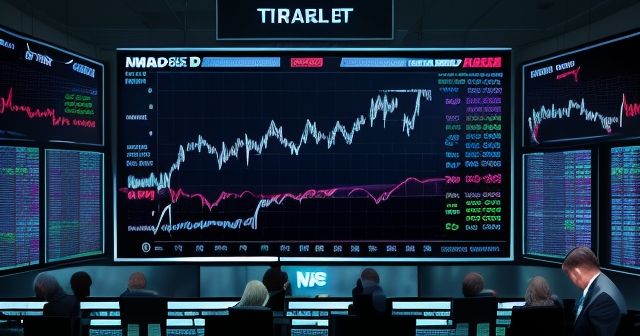
Thirdly, halts help prevent panic reactions. Extremely negative news could trigger widespread, panicked selling, driving the stock price down precipitously in a disorderly fashion. Similarly, overwhelmingly positive news could lead to a buying stampede. While markets are inherently volatile, halts can help temper these initial emotional responses by forcing a pause for rational assessment. This contributes to maintaining an orderly market.
In essence, the regulatory mandate is clear: markets must be fair, transparent, and orderly. Trading halts, particularly those for pending news, are a key tool used by exchanges to enforce these principles, acting as a temporary circuit breaker for information flow rather than price volatility.
The Lifecycle of a T1 Halt: From Pending to Resumption
A NASDAQ T1 halt is rarely the final state before trading resumes. Instead, it’s typically the first step in a sequence of halt codes that indicate the status of the news and the impending restart of trading. Understanding this progression is vital for traders waiting for a stock to become tradable again.
The standard lifecycle following a T1 halt usually looks like this:
| Halt Code | Description |
|---|---|
| T1 (Halt – News Pending) | Initial state; trading is suspended due to expected material news. |
| T2 (Halt – News Released) | Indicates that the company has released material news; trading does not resume immediately. |
| T3 (Halt – Resumption Times Specified) | Announces specific time for trading to resume; often includes a quote-only period. |
The duration of each stage, particularly the T1 and T2 phases, can vary. It depends largely on when the company is ready to release the news and how complex or extensive the news is, influencing how long the exchange deems necessary for adequate dissemination and digestion. Sometimes, if news is delayed or doesn’t materialize as expected, a T1 halt might be extended or even lifted without a T2 transition (though this is less common if the initial reason for the halt was a confirmed impending news release).
From T1 to T2: The Critical News Release Event
The transition from a T1 (News Pending) halt to a T2 (News Released) halt is perhaps the most critical moment in the halt lifecycle from an informational standpoint. It marks the point at which the uncertainty surrounding the “pending” news is resolved. The black box is opened, and the material information that prompted the trading pause is finally revealed to the public.
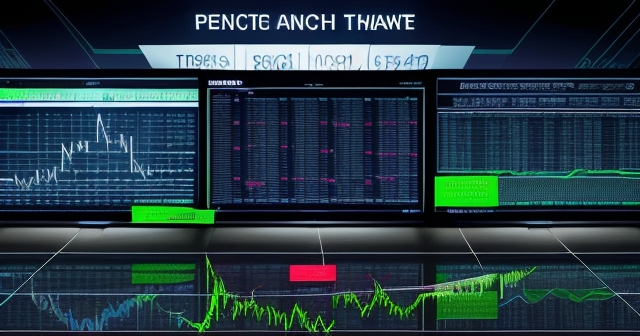
During the T1 phase, market participants are left guessing, or perhaps trading on rumors (though trading based on non-public material information is illegal insider trading). The T2 code confirms that the official information is now available. This could be anything from blowout earnings, a major acquisition deal, regulatory approval for a key product, or devastating financial losses.
Once the T2 code appears, your immediate focus as a trader should shift from waiting to analyzing. You need to quickly access the news release – typically found on major financial news websites, reputable financial data terminals, or the company’s investor relations page – and carefully read the details. What exactly was announced? What are the key figures? What are the stated implications by the company?
It is vital to take the time to understand the news’s potential impact on the company’s fundamentals and future prospects. Don’t just skim headlines. The devil is often in the details. For example, record revenue might be offset by increasing costs or negative future guidance. A new product approval might come with significant restrictions. Your interpretation of this newly released information will form the basis of your trading strategy once the halt is lifted.
The period under the T2 halt, before it transitions to T3, is specifically granted by the exchange for this purpose – for you, and millions of other market participants, to read, understand, and begin to price the stock based on the new reality. Rushing this analysis would negate the protective purpose of the halt itself.
Decoding T3: Setting Resumption Times and the Quote-Only Period
Following the news release and the subsequent T2 halt period, the next stage is the transition to a T3 (Resumption Times Specified) halt code. This is the green light signaling that trading will soon recommence, and crucially, it provides you with the timeline.
When a T3 halt is initiated, NASDAQ will publish the specific time for trading resumption. This announcement doesn’t mean trading starts instantly; it means the countdown has begun. Often, the exchange will stipulate a “quote-only” period preceding the actual trading. This period, typically lasting several minutes, allows market makers and other participants to enter their buy and sell orders, establishing new bid and ask prices based on the news digested during the T2 phase.
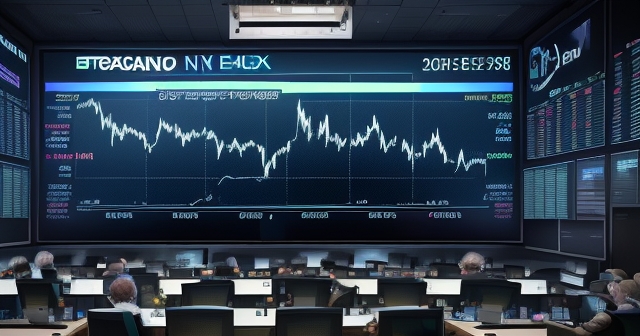
Imagine the order book being reset. During the quote-only period, you can see where potential buyers and sellers are positioning themselves, but no trades are executed. This period is incredibly valuable as it provides insights into the market’s initial reaction to the news. You can observe the emerging equilibrium price range and the depth of buying and selling interest at different levels.
For you, this is the time to finalize your trading strategy. Based on your analysis of the news and the emerging price levels in the quote-only period, you need to decide if you want to buy, sell, hold, or potentially place new limit or stop orders. It’s a period of intense preparation before the gates open again.
Once the quote-only period concludes at the specified time, trading officially resumes. The halt is lifted, and buy and sell orders are matched and executed. It’s important to be prepared for potential volatility immediately upon resumption, as accumulated orders are filled and the market finds its new price level based on the material news.
Factors Influencing Trading Halt Duration
You might wonder, how long does a trading halt, particularly a T1 halt, typically last? There’s no single, fixed answer. The duration can vary significantly, ranging from less than an hour to sometimes the entire trading day, or in rare instances, even longer.
Several factors influence how long a stock remains under a trading halt:
- Timing of News Release: The most significant factor for a T1 halt is when the company is ready to release the “pending news.” The halt will remain at T1 until the news is officially disseminated. If the news release is delayed, the T1 halt will extend.
- Complexity of the News: Simple news might require only a short T2 period for digestion. However, highly complex news, such as detailed merger terms, complicated financial restatements, or extensive regulatory findings, will necessitate a longer T2 phase to allow market participants adequate time to read and understand the information fully.
- Dissemination Process: While news is often released via wire services, ensuring it reaches all corners of the market takes a little time. Exchanges monitor this dissemination to ensure broad access before moving to T3.
- Exchange Procedures: NASDAQ, like other exchanges, has standard protocols for minimum halt durations for news dissemination and minimum quote-only periods before resumption (T3). These procedures are designed to ensure fairness and orderliness.
- Regulatory Scrutiny: In some cases, particularly if the news is unusual or potentially market-moving in a dramatic way, regulators or the exchange might require additional time for review, potentially extending the halt.
- System Readiness: While less common for news halts, occasionally technical issues or system readiness checks before a major resumption can slightly impact the timeline.
| Factors Influencing Duration | Description |
|---|---|
| Timing of Release | Extent of the halt depends on when the company is ready to release news. |
| News Complexity | Complex news may require longer digestion time before trading can resume. |
| Dissemination Process | Ensures that news reaches market participants broadly before resumption. |
| Regulatory Review | Potential need for additional scrutiny could extend the halt. |
For you, the trader, the key takeaway is patience and vigilance. During a T1 or T2 halt, you simply cannot trade the stock. Your focus should be on preparing for resumption by analyzing the news (once available) and watching for the T3 announcement which specifies the exact time trading will restart. The uncertainty of the duration is part of the challenge, but it is a necessary byproduct of the halt’s purpose.
Impact on Traders and Navigating a T1 Halt
For traders and investors, a T1 trading halt presents both potential benefits and significant challenges. Understanding these impacts is crucial for managing your portfolio effectively.
On the positive side, the halt’s purpose is to protect you. It prevents others from trading on information you haven’t seen, ensuring a fairer market environment. It also gives you dedicated time to research and understand the news thoroughly (once released) before making any trading decisions. This can prevent impulsive, news-driven panic trades.
However, the halt can also be disruptive. If you hold a position (long or short) in the halted stock, you are temporarily frozen. You cannot exit your position, adjust your stop-loss orders, or take advantage of any price movements that might have occurred had trading continued. This can be particularly frustrating if you had a specific trading plan or if the news is significantly adverse to your position.
Perhaps the most significant challenge is the potential for a price gap upon resumption. Because trading is paused while news is released and digested, the first trade price when the market reopens is likely to be substantially different from the last trading price before the halt. If the news is positive, the stock might resume trading significantly higher (gap up). If the news is negative, it will likely resume trading significantly lower (gap down). These gaps can be substantial and can dramatically affect the profitability (or loss) of your position.
So, how should you navigate a T1 halt? Here’s a suggested approach:
- Confirm the Halt Reason: First, identify that it’s a T1 halt (News Pending) on NASDAQ. You can usually find this information on your broker’s platform or financial news sites that list halt codes.
- Wait for the News (T2): Patience is key. You can’t trade anyway. Focus on monitoring the stock’s halt status, waiting for the transition to T2 (News Released).
- Analyze the News (T2): As soon as the news is out, drop everything and read it carefully. Understand the details and implications. How does this news affect your initial reasons for trading or investing in this stock?
- Formulate Your Strategy (T2/T3): Based on your analysis, decide what you want to do. Do you want to add to your position, reduce it, exit entirely, or even reverse your stance?
- Prepare for Resumption (T3): Once the T3 code is announced, note the resumption time. Pay attention to the quote-only period to gauge market sentiment and potential opening price. Have your orders ready.
- Execute Your Plan at Resumption: When trading restarts, execute your pre-planned strategy. Be aware that the market might be volatile in the initial minutes as accumulated orders clear.
Navigating halts requires adapting from active trading to a research and strategy-building mindset. It’s about being informed and prepared for the moment trading begins again.
Comparing T1 (News) Halts with Circuit Breaker (Volatility) Halts
It’s important for traders to understand that not all trading halts are the same. While the T1 halt is triggered by impending news, another common type is the Circuit Breaker Halt, also known as a Volatility Trading Pause or LUDP (Limit Up/Limit Down) halt on NASDAQ. These halts are triggered by rapid, significant price movements, not news.
Here’s a key distinction:
- T1 Halt (News Pending): Initiated *before* expected news release. Purpose is information dissemination fairness. Duration linked to news release and digestion time. Focus is on information asymmetry.
- Circuit Breaker Halt (Volatility): Initiated *during* trading, triggered by a stock’s price moving up or down by a certain percentage within a specific timeframe (e.g., 5% in 5 minutes for certain stocks). Purpose is to slow down trading, prevent panic, and allow the market to absorb sudden price shifts. Duration is usually fixed (e.g., 5 or 10 minutes). Focus is on price volatility and market orderliness.
While both result in a temporary pause in trading, the cause and typical duration are different, and your reaction as a trader should adapt accordingly. A circuit breaker halt is often a sign of immediate, sharp price reaction, potentially news-driven but triggered by the price action itself. A T1 halt is a deliberate regulatory pause specifically anticipating a formal news announcement.
Strategies for Traders During and After a T1 Halt
So, you’ve encountered a NASDAQ T1 halt. You know trading is paused due to news pending. What are actionable strategies you can employ from this moment until trading resumes?
During the T1 Halt:
- Monitor Halt Status: Keep an eye on your trading platform or financial news sources for the halt code update (waiting for T2).
- Anticipate Potential News Areas: If possible, consider what kind of material news might be pending based on recent company events, industry trends, or previous announcements. This isn’t about trading on inside information, but being mentally prepared for different scenarios (e.g., earnings are due, regulatory decision is expected).
- Review Your Position: If you hold the stock, re-evaluate your initial trade thesis. Why did you enter this trade? What is your profit target and stop-loss (even though you can’t adjust the stop-loss during the halt)? How might different types of news impact your position?
During the T2 Halt (News Released):
- Access and Analyze the News Immediately: This is your priority. Find the official news release and read it thoroughly. Understand the key facts, figures, and implications.
- Assess Impact on Your Position: Is the news positive, negative, or neutral relative to your expectations and current position? Quantify the potential impact if possible.
- Formulate a Post-Halt Plan: Based on your analysis, decide your course of action:
- If the news is strongly positive and you are long: Will you hold for more gains, sell some shares, or exit?
- If the news is strongly negative and you are long: Will you sell immediately upon resumption to cut losses, or do you see a reason to hold?
- If the news is strongly positive and you are short: You will likely need to cover your position immediately upon resumption, potentially at a significant loss. Plan your exit.
- If the news is strongly negative and you are short: This could be profitable. Plan your exit strategy to lock in gains.
- If you don’t hold a position: Is the news compelling enough to initiate a new trade (long or short)? At what price levels would you be interested?
During the T3 Halt (Resumption Times Specified & Quote-Only Period):
- Note the Resumption Time: Set alerts or be ready at your trading terminal before the specified time.
- Observe the Quote-Only Period: Watch the emerging bids and asks. This provides vital clues about where the stock is likely to open and the market’s collective sentiment post-news. Look for depth of orders at different price levels.
- Prepare Your Orders: Based on your plan and the quote-only information, set up your buy or sell orders. Consider using limit orders to control your execution price, but be aware they might not be filled if the market moves quickly past your limit. Market orders offer execution certainty but not price certainty – critical when anticipating a gap.
Upon Trading Resumption:
- Execute Your Plan: Be disciplined and execute the strategy you developed. Avoid making impulsive changes based on the initial volatility.
- Monitor Execution: Ensure your orders are filled as expected.
- Adjust Stops/Targets: Once your position is managed or initiated, adjust your stop-loss orders and profit targets based on the new market price and your updated analysis.
Trading through a halt is less about reacting in the moment (which you can’t do) and more about preparation, analysis, and disciplined execution when the opportunity returns.
The Psychology of Trading Post-Halt Volatility
When a trading halt, especially one triggered by significant news like a T1 halt, is lifted, the resumption of trading is often accompanied by a surge in volatility and potentially dramatic price swings. This isn’t surprising; pent-up supply and demand, shaped by the news released during the halt, are suddenly unleashed into the market. For traders, navigating this post-halt environment requires not only a solid strategy but also a firm handle on their psychology.
Upon resumption, you might witness the stock price jumping significantly up or down from its pre-halt level. This “gap” can be exhilarating if it’s in your favor or painful if it’s against you. The initial minutes of trading can see wide bid-ask spreads and rapid price discovery as the market seeks a new equilibrium based on the material news.
Emotional responses are common in such situations. If you’re experiencing a profitable gap, you might feel tempted to delay selling, hoping for even more gains, potentially missing the peak. If you’re facing a significant loss due to a gap down, panic might set in, leading you to sell indiscriminately at the worst possible price, potentially at the bottom of the initial move.
This is where the strategy developed during the T2 and T3 phases becomes invaluable. Your plan should account for the potential gap and volatility. Did you decide to exit immediately regardless of the gap size to limit downside? Did you plan to add to a winning position on a specific pullback? Having a pre-defined plan helps remove emotion from the decision-making process during the chaotic initial moments post-halt.
Remember, the market is now pricing in the news. The initial reaction might be an overreaction. Sometimes, stocks will gap sharply but then partially retrace as calmer analysis prevails. Other times, the initial move is just the beginning of a sustained trend. There is no guaranteed outcome, which is why having a risk management plan, including where you will exit if the move goes against you, is paramount.
Successfully trading post-halt volatility is less about predicting the exact price and more about managing your entry or exit based on your analysis and predefined risk parameters amidst potential chaos. Stay disciplined, trust your analysis of the news, and stick to the plan you made when you had time to think clearly.
Historical Context and the Evolution of Halts
While trading halts feel like an immediate, necessary part of today’s market structure, their widespread implementation, particularly the concept of market-wide circuit breakers, evolved significantly after major market disruptions. The most cited example is the Black Monday crash of 1987, when global stock markets experienced a massive, rapid decline in value on October 19th.
The speed and severity of the Black Monday crash highlighted the potential for panic selling to feed on itself in the absence of mechanisms to pause trading and allow for a collective breath. In response to this event, regulators and exchanges developed and implemented rules for market-wide circuit breakers. These are different from the single-stock halts we’ve discussed, as they apply to the entire market (e.g., pausing trading on all exchanges if a major index like the S&P 500 drops by a certain percentage threshold within a trading day).
While market-wide circuit breakers address systemic volatility, single-stock halts like the NASDAQ T1 halt address issues specific to individual securities – primarily the fair dissemination of information. The rules governing these news-pending halts have also evolved over time, driven by changes in communication technology, trading speed, and regulatory efforts to enhance market transparency and investor protection. The requirement for companies to release material news broadly and for exchanges to pause trading ahead of such releases became standard practice to prevent the kind of information advantages that were more prevalent in earlier market eras.
Understanding this historical context helps underscore the importance of trading halts. They are not arbitrary interruptions but carefully designed regulatory tools developed in response to real-world market failures and aimed at creating a more equitable and stable trading environment for everyone involved, including you.
Conclusion: Mastering the T1 Signal for Smarter Trading
In the dynamic world of stock trading, encountering a trading halt is an inevitability. Among the various types, the NASDAQ T1 halt stands out as a clear signal that significant, material news about a company is on the horizon. It’s a pause button pressed by the exchange, under regulatory oversight, specifically to ensure that all market participants receive and can digest critical information simultaneously, thereby maintaining market fairness and integrity.
We’ve seen that a T1 halt is not just a random stop; it’s the beginning of a structured process, typically moving from T1 (News Pending) to T2 (News Released), and finally to T3 (Resumption Times Specified), often including a crucial quote-only period before trading officially resumes. This lifecycle provides a window of opportunity – not for trading, but for rigorous analysis and strategic planning.
For you, the trader, understanding the meaning of a T1 halt means recognizing that trading is temporarily impossible and shifting your focus to preparation. This involves patiently waiting for the news, conducting a thorough analysis once it’s released during the T2 phase, formulating a clear trading plan based on that analysis, and then preparing to execute that plan decisively when trading resumes following the T3 announcement. While halts can lead to frustrating periods of inactivity and potentially significant post-halt price gaps, they serve a vital protective function by mitigating information asymmetry and helping to prevent disorderly markets driven by rumor or panic.
By recognizing the T1 halt signal, understanding its regulatory purpose, and having a structured approach to navigating the news release and subsequent resumption, you position yourself to make more informed decisions and manage risk more effectively. Mastering the signals like the T1 halt code is a key step in developing the knowledge and discipline required for successful trading in complex financial markets.
t1 halt meaningFAQ
Q:What triggers a NASDAQ T1 halt?
A:A T1 halt is triggered by an impending release of material news that may significantly impact the stock price.
Q:How long does a T1 halt typically last?
A:The duration of a T1 halt can vary from less than an hour to an entire trading day, depending on the timing and complexity of the news.
Q:What happens during a T1 halt?
A:During a T1 halt, trading is suspended while market participants await the release of material news, ensuring fair dissemination of information.
You may also like
Calendar
| 一 | 二 | 三 | 四 | 五 | 六 | 日 |
|---|---|---|---|---|---|---|
| 1 | 2 | 3 | 4 | 5 | 6 | 7 |
| 8 | 9 | 10 | 11 | 12 | 13 | 14 |
| 15 | 16 | 17 | 18 | 19 | 20 | 21 |
| 22 | 23 | 24 | 25 | 26 | 27 | 28 |
| 29 | 30 | 31 | ||||
發佈留言
很抱歉,必須登入網站才能發佈留言。